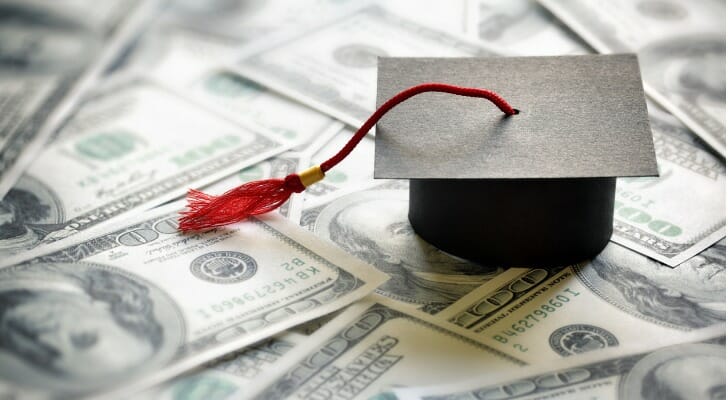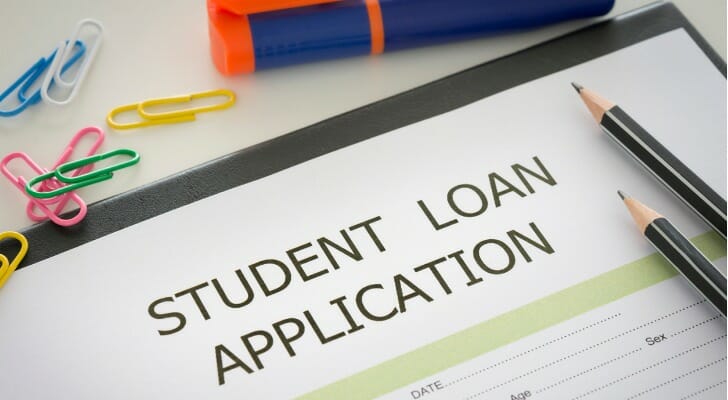
If you’re in search of financial help for higher education, you may have explored different scholarships and grants to pay the way. Gifted money is a great way to pay for school without having to worry about paying it back after graduation. However, if you don’t have all your expenses covered through scholarships and grants, you might need to consider student loans to fill in the gaps. If you’re exploring federal aid, Stafford loans might be an option. Consider working with a financial advisor as you explore education expenses and debt repayment.
What Is a Stafford Loan?
A Stafford loan is a federal student loan provided by the government to help pay for your education while you’re attending a university, community college, trade or technical school. Interest rates are adjusted annually on July 1 for these types of federal loans.
Stafford loans are now referred to as direct subsidized loans or direct unsubsidized loans. The difference between subsidized and unsubsidized loans is who pays for the accrued interest of the loan while you’re in school and how much you may be able to borrow.
A subsidized loan is only available to undergraduate students in financial need. The Department of Education pays the interest that adds up on your behalf while you’re in school at least half-time, as well as during the six-month grace period after graduation and during deferment or forbearance periods. An unsubsidized loan is available for both graduate and undergraduate students and isn’t based on financial need. The student is responsible for the interest that builds up while in school. Payments could be more costly than those for a subsidized loan because of that accrued interest.
If a subsidized loan doesn’t cover all your college costs, you can take out an unsubsidized loan, too. The aggregate loan amount for unsubsidized loans is capped at $31,000 for undergraduate students considered dependents and whose parents don’t qualify for direct PLUS loans. Undergraduate independent students may be allowed to borrow up to $57,500, while graduate students may be allowed to borrow up to $138,500.
These types loans have fixed interest rates determined by the government, come with a fee and allow the student to borrow for up to 150% of the length of the program they’re enrolled in. For example, if you’re attending a four-year college, you would be able to borrow these loans for up to six years.
How to Qualify for a Stafford Loan
What you need to get a Stafford loan depends on your financial standing. Students or parents of the student must first complete the Free Application for Federal Student Aid (FAFSA). Next, you’ll receive an award letter that details if you qualify for a Stafford loan. Your financial need determines if you’ll get a direct subsidized loan. If you don’t qualify, then you may receive a direct unsubsidized loan.
If you do qualify for one of these loans and you’re ready to accept the federal aid, you’ll need to submit a Mastery Promissory Note (MPN). This is a legal document which states that you promise to pay back your loans in full, including any fees and accrued interest, to the U.S. Department of Education. The school of your choice will determine how much money you’re eligible to receive and the funds go straight to your school – not to you. Since you can receive money based on your need or school enrollment – not your credit score – only your application is required.
Stafford Loan Alternatives
If you’ve exhausted all of your financial aid options, it might be time to explore other means to pay for school.
Direct PLUS Loans
Direct Plus loans are federal loans that are available to graduate or professional students, or parents of undergraduate students. They require a credit check and you might be required to make payments while you or your child is in school. However, you could request deferment and make payments after you or your child graduates or drops below half-time.
Private Student Loans
If you can’t get any further federal aid, you may consider private student loans. Instead of coming from the U.S. Department of Education, these types of loans are issued from private issuers, such as banks, credit unions or online lenders. If you’re not sure where else to look, contact your school’s financial aid office. It may have scholarships, grants or other small loans available that you might qualify for.
Bottom Line

College is expensive and not everyone can afford to pay for it out of pocket. Tapping into financial resources, including Stafford loans like subsidized and unsubsidized loans, as well as direct Plus loans and private student loans, may help. Don’t be afraid to contact your school’s financial aid office for even more resources to pay for school.
Tips for Student Loan Borrowers
- If you’re not sure of the best strategy for securing student loans, consider working with a financial advisor. Finding a financial advisor doesn’t have to be hard. SmartAsset’s free tool matches you with up to three vetted financial advisors who serve your area, and you can interview your advisor matches at no cost to decide which one is right for you. If you’re ready to find an advisor who can help you achieve your financial goals, get started now.
- Interest rates for private student loans are often higher than those for federal loans. If you or your child is struggling to pay private student loans, consider student loan refinance rates available now.
Photo credit: ©iStock.com/William_Potter, ©iStock.com/utah778, ©iStock.com/BrianAJackson
